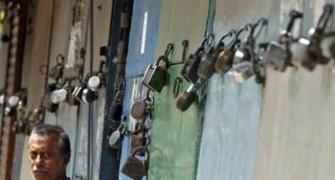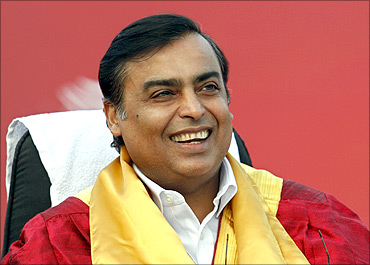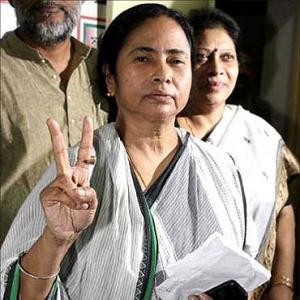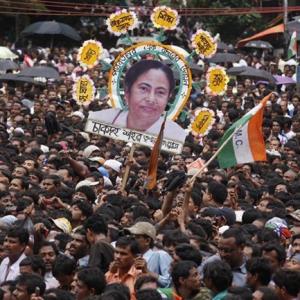From an industrial hub as envisaged by the Left regime, Nandigram today is a conglomeration of model villages fenced by its greenery.

With only a few weeks to go before the Assembly elections, the political landscape in West Bengal has changed: The Opposition has gained some space with news portal Narada News releasing a video allegedly showing ministers, MLAs and MPs from the ruling Trinamool Congress (TMC) accepting cash for extending favours to a fictitious company; the Bengal intelligentsia that was once on the same side as chief minister Mamata Banerjee and screaming for Paribartan (change) is now a confused lot.
And, the obvious casualty in all the din is Kolkata as it continues to play the perfect host to rallies and counter-rallies.
Around 160 km away from the pandemonium, Shaktipada Mondal, 60, of Sonachura in Nandigram (Purba Medinipur district), hasn't heard about the controversial video.

In the past nine years since the police firing in connection with a land acquisition for a 14,000-acre chemical hub project by Indonesia's Salim Group, killing 14 according to the official version of the then Left Front government; 50 as claimed by TMC which was then in the Opposition), life has not changed much for him.
Mondal makes do with a meagre earning of Rs 200-300 a day from his small-time kirana store that was witness to the firing.
"I had to flee after the firing and then set up shop all over again," recalls Mondal.
Was there any help from TMC that came to power on the back of its successful agitation in Nandigram?
"No," says Mondal, whose insurance against a bad sales day is a 90-decimal plot where he grows paddy.
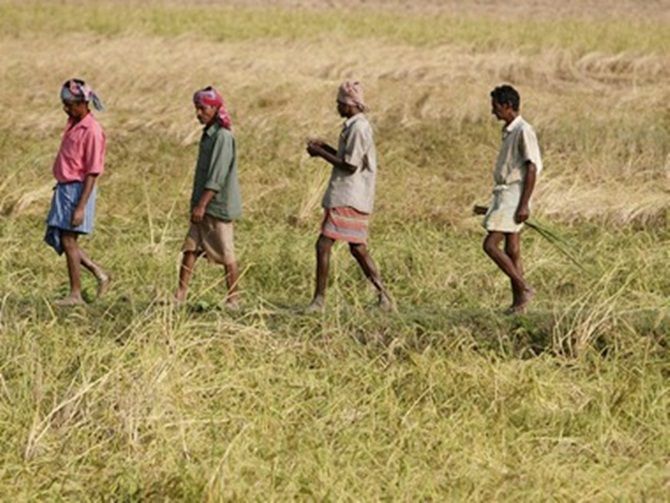
Mondal represents 80 per cent of the farmers of Nandigram who are marginal and engaged in subsistence agriculture.
That, of course, is the story of West Bengal where 84 per cent of the land is owned by small and marginal farmers thanks to the land reform initiatives of the Communist government in the late 1970s.
Lack of employment opportunities in Nandigram has pushed three of Mondal's sons to work outside the state.
That part of the story, however, is repetitive as 10-15 per cent of the population of Nandigram have moved to Odisha or Gujarat for work.
The backwardness of the place was one of the reasons why the Left Front government decided to locate the Salim Group project here.
The project was relocated by Buddhadeb Bhattacharjee after the police firing and later scrapped by the Banerjee government.
From an industrial hub as envisaged by the Left regime, Nandigram today is a conglomeration of model villages fenced by its greenery.
From primary healthcare centres to toilets under the Mission Nirmal Bangla, the West Bengal government's sanitation programme, Nandigram has it all.

Nandigram is flourishing, says Kali Krishna, the gram pradhan.
In the past five years, 18 km of roads have been built under the National Rural Employment Guarantee Act, which also happens to be a major source of income.
The state government has also achieved 100 per cent electrification.
The Pradhan is particularly gung-ho about shrimp farming. The income of roughly 20 per cent of the farmers with large landholding has doubled in the past few years.
West Bengal earns foreign exchange of nearly Rs 1,500 crore (Rs 15 billion) through shrimp exports and Purba Medinipur accounts for the lion's share.
Ever since the TMC government came to power, there has been an unrestrained growth in shrimp farming as the local panchayats have been quick in giving approvals for land conversion from agriculture to coastal land.
In the best of years, profits from paddy farming have rarely exceeded Rs 5,000 a bigha (third of an acre).
But now, a handful of farmers can earn as much as Rs 40,000 for a bigha. In addition, with each farm employing five to 10 workers, it has also translated to jobs.
When not building roads or farming shrimps, Nandigram pays homage to the 'shahids' of the police firing.
Thirteen Shahid Minars (memorials) have been built in the past five years. The tallest is 125 feet, costing Rs 3 crore (Rs 30 million).
LOSING OUT
2006
July 31: West Bengal signs an agreement with Indonesia-based Salim group for several projects, including a chemical hub at Nandigram
August: Trinamool-backed Krishi Jami Raksha Committee (a state-wide initiative) is formed to protest against land acquisition
2007
January 2: Haldia Development Authority issues notice for land acquisition
January 3: Villagers gather at local panchayat office to protest
March 13: Panic strikes Nandigram as word spreads about possible police action
March 14: Thousands assemble at Sonachura with women and children in front; police opens fire. At least 14killed
March 17: CM Buddhadeb Bhattacharjee says no chemical hub will be set up at Nandigram


